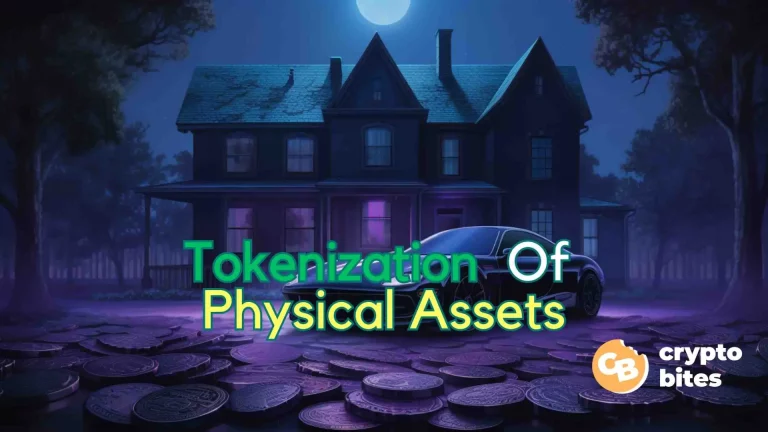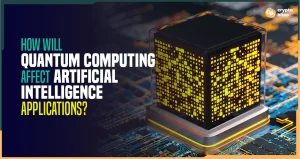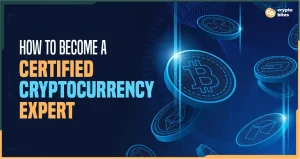
Digital Alchemy: Transforming Physical Assets through Tokenization
Tokenization—the new language of investment—is rapidly reshaping the rules of asset ownership. This revolution, born from the disruptive soil of blockchain technology, isn’t merely making waves—it’s causing a financial tsunami, washing away traditional barriers.
This article offers an exciting expedition through the multifaceted landscape of asset tokenization. Our goal? To provide you with a lucid understanding of how this blockchain-driven shift is redefining asset management, investment, and trading worldwide.
- The ins and outs of tokenization – Discover how this groundbreaking technology equips both individuals and organizations to manage assets more efficiently and inclusively.
- The benefits and challenges of tokenization – No monumental shift is without hurdles. We’ll explore the tumultuous terrain of regulatory uncertainties, security issues, and technological roadblocks that come with the territory.
- Real-world applications – Theory without practice holds no water. We’ll walk you through the real-world applications of tokenization, demonstrating its transformative effects across varied sectors.
Strap in and get ready to zoom into the epicenter of a financial revolution with us. This is tokenization. This is the future of asset ownership and management.
Understanding Tokenization
Venturing into the world of asset tokenization might feel like navigating uncharted waters, especially if you’re just dipping your toes into it. Fear not, for this finely-crafted, deep-dive guide will effortlessly decode this complex concept for you.
From tech-savvy investors and enterprising entrepreneurs to diligent regulators—strap yourselves in, because you’re in for a thrilling, enlightening journey.
What Is Tokenization?
If you want to become a competitive trader or investor in the Blockchain world, understanding the tokenization of assets before anything else might be crucial for you.
Here is an easy explanation of tokenization with an example. This process involves transforming a useful or sensitive thing or information into a token, enabling better transparency, more liquidity, and flexible transactions.
Tokenization in the Blockchain technology world converts valuable assets into digital tokens so you can use them effortlessly on the Blockchain application.
Suppose you have gold, an art, or an intangible asset such as a voting right. The tokenization process can transform these into valuable tokens that you can own or sell easily.
The Role of Digital Tokens
Imagine having a property worth $500,000. In that case, tokenization can convert the property’s ownership into 5,000 tokens, with each token having a value of $100.
If you require money, you can sell these tokens on the market to get some money to spend.
A digital token represents an asset, whether a property or a car. There are many types of tokens.
The ones below are quite common and used by people worldwide.
- NFTs, or non-fungible tokens, are the most popular use of tokenization on the blockchain so far. NFTs are cryptographic assets made with the help of Blockchain technology.
They are unique and represent different things, such as art, tickets, or music. CryptoPunks and Beeple are two well-known NFTs.
- Utility tokens help users to access certain services and products. They are also known as redeemable or digital coupons. Some examples of the most common utility tokens are ApeCoin and Enjin Coin.
- Security tokens represent digital assets run on various Blockchain networks and define a stake or ownership in a real asset. Some well-known security tokens are BCAP and EXOD.
- Exchange tokens are a cryptocurrency provided by an exchange. They usually help in paying fees for any transaction on the exchange. Binance USD and FTX are some examples of these tokens.
- Meme coins are tokens inspired by famous memes in the world. Their value depends on the community’s response to these tokens. Dogecoin and Shiba Inu are two well-known meme coins.
The Power of Physical Assets
In the process of tokenization, physical assets play an imperative role. But how can you define them?
What are Physical Assets?
A physical or fixed asset is any tangible asset that you can easily see and feel. So, a building, vehicle, machinery, or furniture are all examples of physical assets.
That said, do you know how you buy, sell, or own assets?
In a traditional world, assets are bought and sold in the same manner as other things. But when you buy physical assets, you consider them as an investment.
There are many income-producing assets, such as bonds, property rentals, dividends, and peer-to-peer lending, that can help you earn lots of profits in a few years.
If you choose to sell your assets, make sure you identify them before evaluating their value and find appropriate buyers to purchase the assets.
When an asset is sold, its ownership gets transferred from one party to another. Suppose you are A and wish to sell your property to B. In that case, B becomes the legal owner of the property after buying it from you.
B can keep the asset in their original form or can choose to tokenize them. But how?
How Tokenization Applies to Physical Assets
To tokenize a physical asset, you must first create its digital representation on the Blockchain networks.
The entire process takes place in a few steps, including selecting the asset, defining the token type, choosing a suitable Blockchain, developing smart contracts, and then managing tokenized assets through a proper solution before issuing them.
All real-world assets, such as equities, fiat currency, commodities, carbon credits, and fine art, can be easily tokenized. Art can be tokenized into NFTs, an increasingly popular avenue for potentially lucrative digital ownership.
The Mechanism of Tokenization
Tokenization helps convert an asset or its ownership rights into unique units commonly known as tokens. These units help in indicating the ownership of the asset.
The entire mechanism of tokenization revolves around certain steps, and one of them involves the development of smart contracts.
What do smart contracts have to do with tokenization?
The Role of Smart Contracts in Tokenization
Before we recognize their role, it is essential to know what smart contracts are in the first place. Smart contracts are often referred to as game changers in tokenization. Have you ever thought, why?
Smart contracts are maestros that work like magic while mining tokens. These programs help automate the entire process of tokenization, making sure that every token is securely created, properly identified, and is an accurate representation of the underlying asset.
What’s more, these contracts also help in facilitating and managing the rights of various token holders. So, whether you want to transfer ownership, receive your dividends, or vote on an issue, smart contracts play a significant role in establishing fairness, transparency, and reliability in the entire process of tokenization.
The Tokenization Process Explained
Now you know the basic information and the role of smart contracts, dig in to explore a step-by-step tokenization process for a better understanding.
Assess Your Assets
Make sure you get your chosen asset assessed for its value and all its distinguishing features.
Choose a Token
Pick a token type that helps to complement your goals and assets. One of the most popular technologies is NFT.
Recognize All the Legal Requirements
Make sure that you are aware of all rules and laws in your country related to tokenization. This is imperative for the right ownership of assets and token distribution.
Select a Proper Platform
Your next step should be selecting a Blockchain network to conduct tokenization. Look for various options before selecting one.
Develop Smart Contracts
We have already discussed how important smart contracts are in this process. This is the right time to decide the number of tokens you wish to create and fractionalize.
Secure Your Assets
Make sure you pick a secure facility to keep your assets safe. You may also give your assets to a trusted third party.
Give Away Your Tokens
Once the tokens are ready, issue them as per your choice.
The Impact of Tokenization
The process of tokenization may seem daunting for any newbie. Yes, it is not as smooth as you might have thought. It faces many challenges, but the benefits are also unmatchable.
Let’s discuss both sides of this process below.
Benefits of Tokenizing Physical Assets
What advantages are there from tokenizing your physical assets? Well, tokenized investments gain a substantial increase in liquidity. Liquidity refers to the ability to sell or buy physical assets immediately at prices that reflect their current value.
Unfortunately, in traditional investment procedures, such transactions are usually considered expensive and slow. But tokenization supports fast trading opportunities, allowing potential buyers and sellers to access tokens and invest.
Tokenization also increases market efficiency. Since there are no middlemen involved here, settlement duration decreases by manifolds. Similarly, cost savings are also enhanced through automation.
Another significant benefit of tokenization is the concept of fractional ownership. Suppose you are a small investor. In that case, you can get fractional ownership in properties through tokenized real estate.
What does this do? This process helps any individual to access expensive properties easily. You can purchase small shares in an expensive property using your limited budget instead of buying the whole property.
Challenges and Risks of Tokenization
This process also comes with its fair share of challenges in tokenizing physical assets. For example, these assets are still prone to liquidity and volatility risks. The tokenized asset’s value may be affected by its demand and supply.
Tokenization depends on technology, so the chances of hackers stealing digital assets are high. Generally, Blockchain technology is considered safe and secure. However, there have been many instances of cyber attacks on various cryptocurrency exchanges.
This process is also the victim of several regulatory challenges. There is a lack of clarity when it comes to regulating tokens in a better way for their widespread use.
It is not easy to fit tokenization into the traditional legal framework. Applying existing regulations becomes a hassle, especially where this process blurs the boundary between conventional financial assets and instruments.
These challenges are often overcome by considering tokens as securities and implementing similar regulations. There is also a strong focus on the robust implementation of anti-money laundering and Know Your Customer procedures to catch any suspicious activity.
The Regulatory Landscape for Tokenization
Like anything else, tokenization also requires strict regulation to maintain integrity and high performance.
Current Regulatory Environment
Currently, there is a lack of a strong legal framework related to tokenization. The regulatory framework seems fragmented and different countries have their own approaches to this regulation. This creates uncertainty among businesses and traders.
For instance, the Securities and Exchange Commission in the USA treats a few tokens as securities and thus applies the same regulations to token trading and offerings. They use a Howey Test to decide whether a token qualifies as a security.
Alternatively, in Switzerland, the Swiss Financial Market Supervisory Authority provides the complete guideline related to tokenization regulation. The regulation requirements are different for every token type.
In Japan, the FSA or Financial Service Agency makes it compulsory for all cryptocurrency exchanges to register with them and follow all the given measures.
Legal Considerations for Tokenization
The legal considerations in tokenization are as important as other regulations. This process goes through many legal complexities, such as the right property rights, regulatory compliance, fractional ownership, and asset valuation. These things can ruin the tokenization process if done wrongly.
Therefore, involving a legal professional to overcome these issues is imperative. This individual can help in the following:
- Assessing the laws and regulations related to tokenization, helping you to comply with them
- Drafting contracts and other paperwork necessary for the process
- Conducting due diligence on all the tokenized assets
- Resolving disputes that may arise during the distribution of tokens
- Giving you advice on tax and other issues that may help you keep in line with the government’s regulations
The Future of Tokenization
The amazing benefits of tokenization show that this process is the future of trade. Its existence seems long-lasting and bright, and many emerging trends prove just that.
Emerging Trends in Tokenization
As per statistics, the global tokenization market may grow from $2.3 billion in 2021 to $5.6 billion in 2025. It aims to advance at the same pace as Blockchain technology.
The process is evolving at a great speed and aims to implement better flexibility and transparency in digital assets. In the upcoming years, more traditional assets will undergo tokenization, increasing liquidity and simplifying the ownership process.
Moreover, with the expansion of tokenization, interoperability among various Blockchain networks will become more crucial than ever. This will help in facilitating seamless transfers and easy exchange of tokens between networks.
However, strict regulations are the need of the hour to make this process effortless and safe for new and experienced investors.
Tokenization’s Impact Across Industries
One of the greatest advantages of tokenization is that its impact is widespread. It has touched many industries, including real estate. Aspencoin is one of the most popular examples of real estate tokenization.
Similarly, Harbor tokenized a student residence in South Carolina, which also gained immense attention.
Tokenization also has a strong impact on the finance industry. It has found a place in the art industry and has no plan of slowing down.
It is predicted to affect the supply chain management soon by making it seamless to track products throughout their sales journey. Businesses can prepare for this revolution by enhancing their security protocols, incorporating technology into their systems, and making automation more important than ever before.
Conclusion
With the whirlwind journey through tokenization complete, it’s easy to see why this process is electrifying the financial world, and more. Tokenization offers better flexibility, liquidity, and market efficiency than our current trading system, allowing big and small investors to access any asset they want.
We’ve explored through the realms of art morphing into NFTs, gold blocks turning into digital gold nuggets, and the democratization of real estate investments. Tokenization is not just a fad, it’s the compass pointing towards the future of asset management.
But, remember, with great innovation comes great responsibility. The risks are real, and the challenges can be steep.
The technology that allows us to convert tangible assets into digital tokens is disruptive, it’s groundbreaking, and it’s here to stay. And as we peer into the future, one thing is certain – the tokenization of assets will keep breaking barriers and creating new horizons, shaping our interaction with value in ways we’re just beginning to grasp.
Are you ready to be part of this digital revolution?




